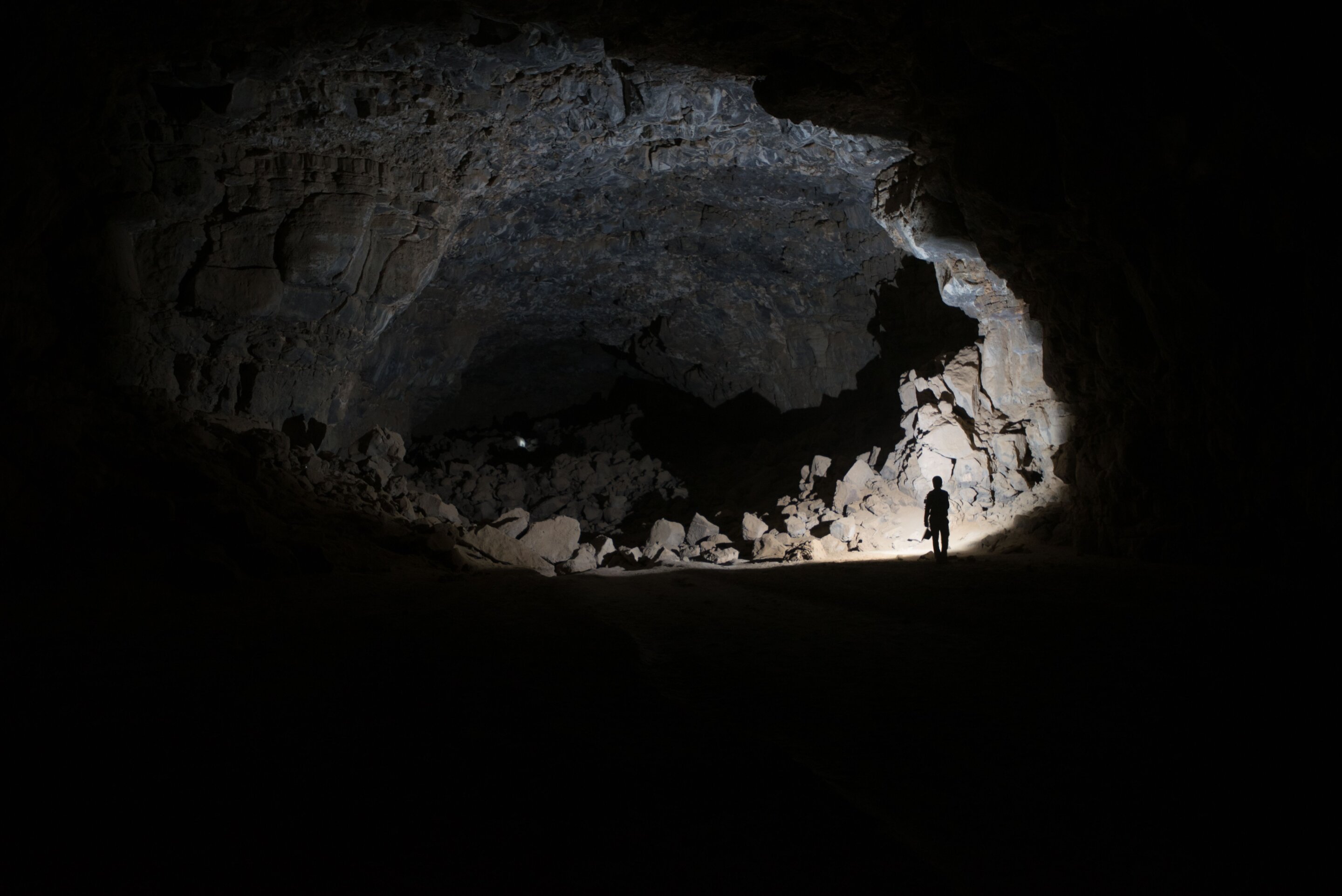Anthropology
Related: About this forumFirst evidence of human occupation in lava tube cave in Saudi Arabia
APRIL 17, 2024
by Griffith University

Deep within the Umm Jirsan Cave system. Credit: Green Arabia Project
Recent strides in interdisciplinary archaeological research in Arabia have unveiled new insights into the evolution and historical development of regional human populations, as well as the dynamic patterns of cultural change, migration, and adaptation to environmental fluctuations.
Despite the challenges posed by limited preservation of archaeological assemblages and organic remains in arid environments, these discoveries are reshaping our understanding of the region's rich cultural heritage.
One such breakthrough led by Griffith University's Australian Research Centre for Human Evolution (ARCHE), in collaboration with international partners, comes from the exploration of underground settings, including caves and lava tubes, which have remained largely untapped reservoirs of archaeological abundance in Arabia.
Through meticulous excavation and analysis, researchers have uncovered a wealth of evidence at Umm Jirsan, spanning from the Neolithic to the Chalcolithic/Bronze Age periods (~10,000–3,500 years ago).
More:
https://phys.org/news/2024-04-evidence-human-occupation-lava-tube.html
Judi Lynn
(162,374 posts)Deep within the Umm Jirsan Cave system. Credit: Green Arabia Project, supplied
April 18, 2024
Matthew Ward Agius
A major archaeological investigation has, for the first time, excavated a lava tube in Saudi Arabia that was inhabited by humans up to 10,000 years ago.
The site at Umm Jirsan shows evidence of human activity spanning several thousand years from the Neolithic period to the Bronze Age.
Supported by Saudi authorities, it continues decades of research undertaken in the region to piece together the ancient history of human activity in the Middle East.
The excavation confirms the presence of humans within the unique geological formation, effectively created by lava flows that harden on the surface but hollow out to create a long, inhabitable conduit made from hardened rock.
Animal remains, human-made earthenware and rock art are among the evidence of human occupation retrieved.
More:
https://cosmosmagazine.com/history/ancient-saudi-lava-tubes-inhabited-thousands-of-years-ago-uncovered/
Judi Lynn
(162,374 posts)18 April 2024
ByDAVID NIELD
Archaeologists have uncovered a treasure trove of evidence that humans once occupied a cave in Saudi Arabia formed by flowing lava, shedding light on the fascinating history of human life in the region.
The discoveries recorded by the international team of researchers include rock art and animal bones, revealing both how people used the cave network and what their diets were made up of while they were there.
The age of these findings indicates the cave, called Umm Jirsan, was regularly used as a dwelling from roughly 10,000 years ago, during the Neolithic, for at least 7,000 years, possibly up to the Bronze Age.
"While underground localities are globally significant in archaeology and Quaternary science, our research represents the first comprehensive study of its kind in Saudi Arabia," says archaeologist Michael Petraglia, from Griffith University in Australia.
Experts have reported from Umm Jirsan before, finding a scattering of human bones among hundreds of thousands of animal remains thought to have been left by scavenging hyenas. Here the researchers focused on human activity in the cave, which stretches 1.5 kilometers (almost a mile) in length.
More:
https://www.sciencealert.com/we-have-the-first-evidence-of-ancient-human-life-in-this-vast-lava-tube-cave